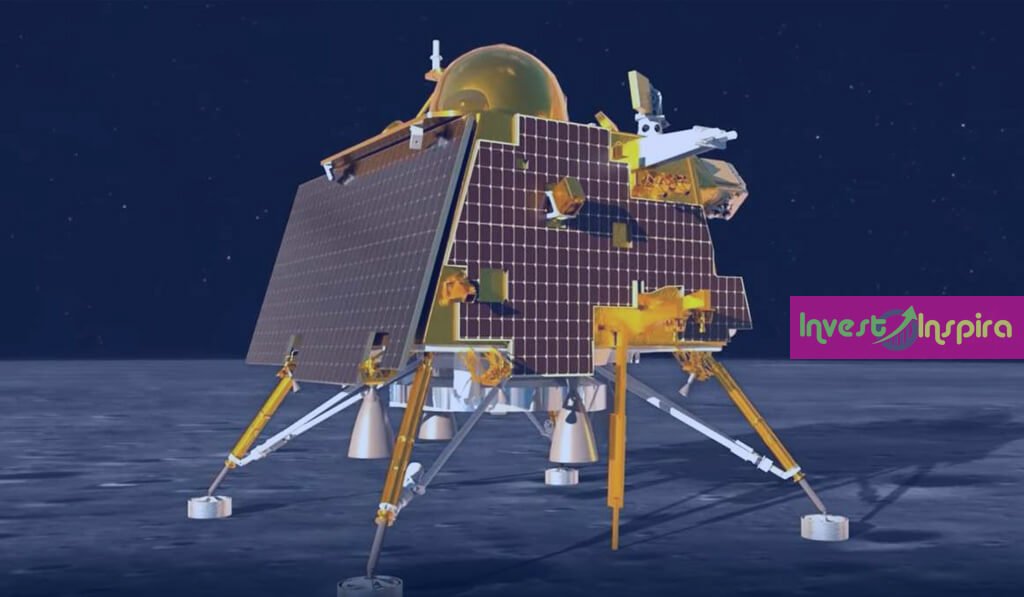The Chandrayaan series of lunar missions by the Indian Space Research Organisation (ISRO) has garnered global attention for its scientific achievements and technological prowess. As India gears up for the Chandrayaan-3 mission, it’s important to delve into the financial aspects that underpin this ambitious lunar exploration endeavor.
Mission Overview
Chandrayaan-3 is the next installment in ISRO’s lunar exploration series, following the successful Chandrayaan-2 mission. Unlike its predecessor, Chandrayaan-3 will focus primarily on the lander-rover module, omitting the orbiter component. The mission’s primary objective is to achieve a soft landing on the lunar surface and deploy a rover to conduct scientific investigations.
Financial Planning and Budget Allocation
The Chandrayaan-3 mission, like its predecessors, requires meticulous financial planning to ensure its success. Budget allocation for space missions involves a comprehensive approach that considers various factors, including research and development, technology acquisition, manufacturing, testing, launch, and operational costs.
While the exact budget for Chandrayaan-3 is not publicly disclosed, it’s expected to be substantial due to the complexity of the mission. Previous lunar missions, such as Chandrayaan-2, required investments of approximately ₹978 crore (around $131 million). The financial allocation must strike a balance between achieving mission goals and managing costs efficiently.
Funding Sources
The funding for Chandrayaan-3 primarily comes from the Indian government, which provides financial support through ISRO’s annual budget allocation. The government’s commitment to space exploration is underscored by its recognition of the strategic and scientific importance of such missions.
Additionally, ISRO has been successful in generating revenue through commercial satellite launches and international satellite deployment services. These revenue streams can contribute to funding lunar missions like Chandrayaan-3, allowing ISRO to explore new frontiers without solely relying on government funding.
Economic and Scientific Returns
While Chandrayaan-3 involves a significant financial investment, the potential returns extend beyond the monetary realm. Successful lunar missions contribute to technological advancements that benefit various sectors of the economy. The scientific data collected from the mission can yield insights into the moon’s composition, geology, and origin, furthering our understanding of celestial bodies.
Moreover, Chandrayaan-3’s success can enhance India’s standing in the global space community, potentially leading to collaborations with other space agencies and research institutions. This could open doors for joint research initiatives, data-sharing agreements, and international partnerships, thereby enriching India’s space program and its economic impact.
Chandrayaan-3, the highly anticipated lunar mission by the Indian Space Research Organisation (ISRO), has marked a significant milestone in India’s space exploration journey. Building upon the achievements of its predecessors, Chandrayaan-1 and Chandrayaan-2, this mission showcases India’s commitment to advancing its scientific and technological prowess in the field of space exploration.
Also Read : What is the first step of the five-step financial planning process?
Mission Accomplished
Chandrayaan-3 achieved a remarkable feat by successfully landing a rover on the lunar surface. The mission’s primary objective was to demonstrate India’s capability for a precision landing and rover deployment, contributing valuable data and insights to lunar research.
Lander-Rover Configuration
Chandrayaan-3 followed a different configuration compared to its predecessor, Chandrayaan-2. This mission focused solely on the lander and rover components, omitting the orbiter. The lander housed the rover, which was designed to traverse the lunar surface, conduct scientific experiments, and transmit data back to Earth.
Landing Site Selection
One of the critical aspects of Chandrayaan-3’s success was the meticulous selection of the landing site. ISRO’s scientists and engineers carefully evaluated potential landing sites on the moon’s surface to ensure optimal conditions for a safe landing and effective scientific exploration.
Scientific Objectives
The rover carried a suite of scientific instruments designed to study the moon’s geology, mineral composition, and surface characteristics. Its findings aimed to provide insights into the moon’s origin and evolution, as well as its potential as a resource for future lunar missions.
Also Read : پراپ Fxfinancer.Com
Technological Advancements
Chandrayaan-3 demonstrated several technological advancements that have contributed to its success. The mission showcased ISRO’s expertise in precision navigation, autonomous landing, and rover mobility. These achievements have far-reaching implications for future lunar missions and space exploration endeavors.
International Collaboration
Chandrayaan-3 also marked a step forward in international collaboration. ISRO’s success in lunar exploration has garnered global attention and recognition. The mission’s achievements have the potential to open doors for collaborations with other space agencies, research institutions, and countries interested in lunar research.
Public Engagement
The success of Chandrayaan-3 resonated with people across India and beyond. ISRO’s efforts in promoting public engagement and awareness about the mission allowed citizens to witness the country’s achievements in space exploration firsthand.
Conclusion
Chandrayaan-3 stands as a testament to India’s dedication to lunar exploration and technological innovation. While the financial investment in the mission is significant, the potential returns in terms of scientific knowledge, technological advancements, and international collaboration are equally substantial. As ISRO meticulously plans and executes Chandrayaan-3, it underscores the importance of financial precision, strategic allocation, and the pursuit of scientific excellence in the realm of space exploration.

